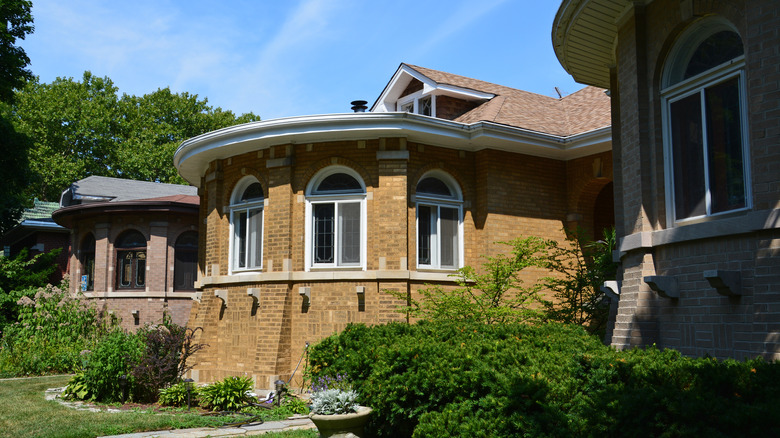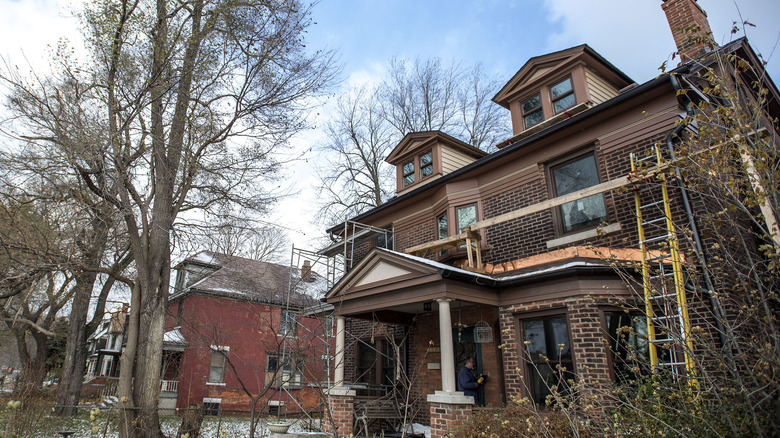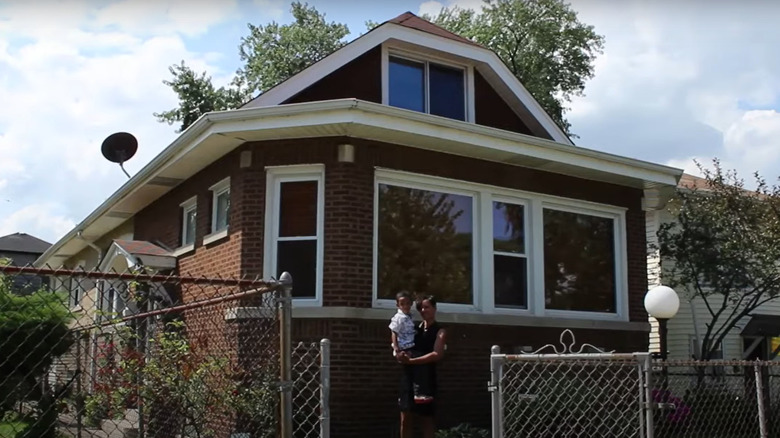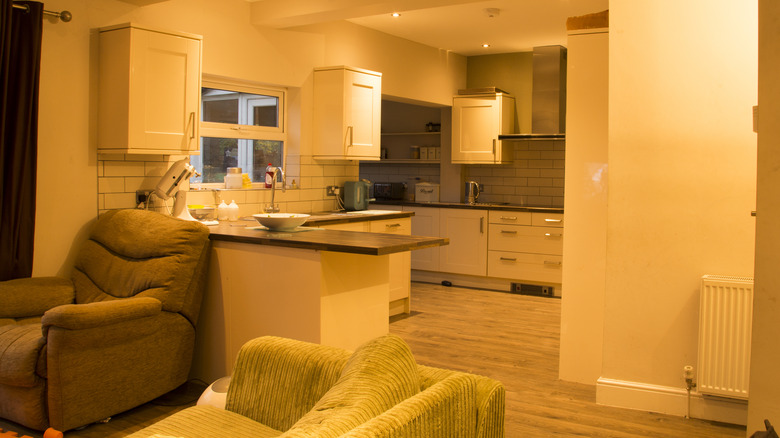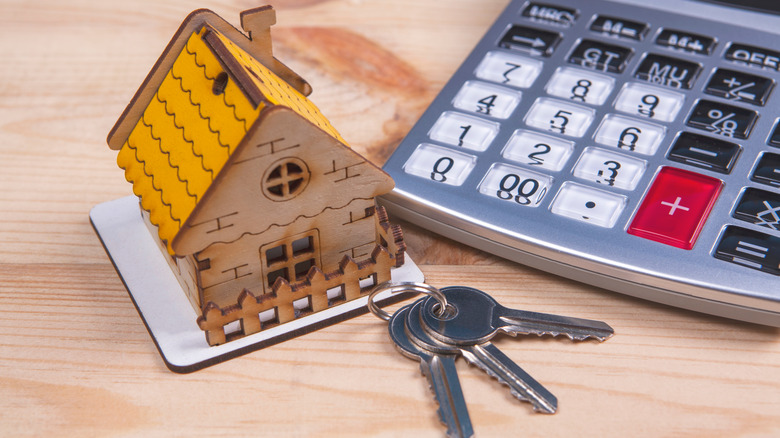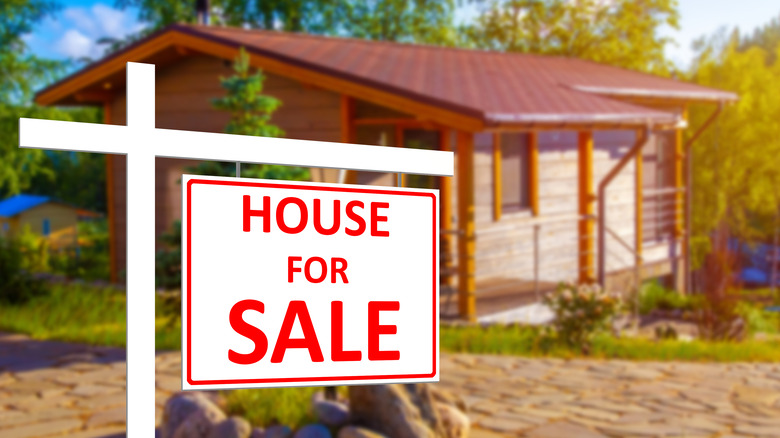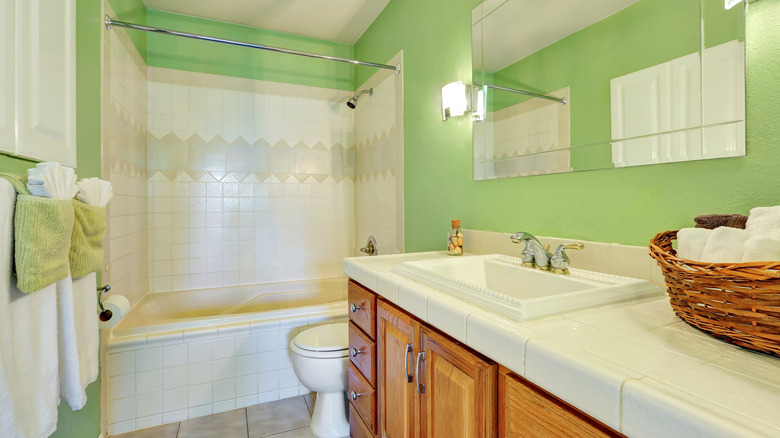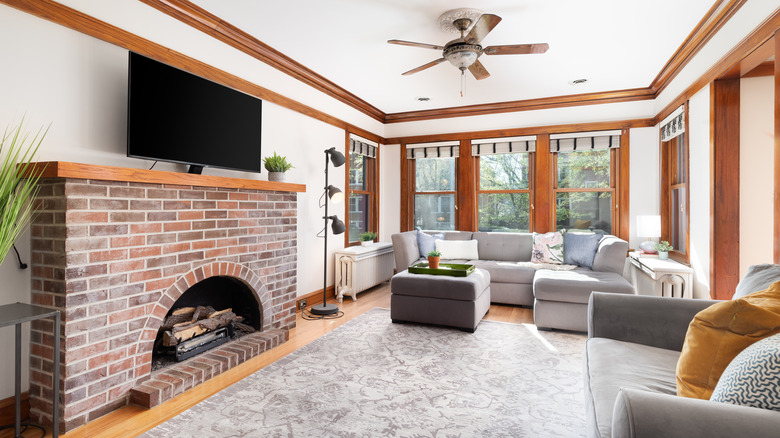Chicago-Style Bungalow Vs. Detroit-Style Bungalow: What's The Difference?
Are all bungalows the same? Let's take a closer look. There are eight types of bungalow houses: Bengali, California, Catskills, Chicago, Detroit, Mediterranean Revival, Milwaukee, and Southern. Although styles vary from place to place, they may not be limited to their original location. But how do these designs differ with cities like Chicago and Detroit only a few hours away from each other?
Originally adopted from India, the first American bungalow, or bangalo (meaning Bengal), emerged at the dawn of the 20th century in California and beyond between 1910 and 1930, per Wonder City Studio. Chicago's biggest distinction is that it's mainly constructed of brick, following the disastrous city fire of 1871 and a deadly theatre fire in 1903. Detroit bungalows are similar in proportion but display a large, centralized dormer within a sloped roofline and are made of brick; well, not always. Read more to learn about these Midwestern bungalows.
How does their composition differ?
Rooted in architectural history, about 1/3 of Chicago's Bungalow Belt district consists of single-family bungalows. Following the tragic city fires and including the seasonal cold climate of Illinois, Chicago bungalows were made primarily of brick. However, according to Chicago Bungalow Association, they also applied fire-resistant asphalt shingles, which were made available by the 1910s. While that's the case in most Chicago-style bungalows, they can also be covered in terracotta, slates, or wood shingles.
Located in historic neighborhoods like Arden Park, Indian Village, and Boston Edison, Detroit bungalows are larger in size, and so is their lot space. They can also be made of brick or other natural materials like timber, wood shingles, stucco, and cobblestone while representing Craftsman-style architecture, but also drawing inspiration from the Japanese and Prairie fashions, per A Detroit Architect's Journal. In addition, their chimneys are raised on a side elevation, which can feature inventive designs done in brick or stone.
How do their exteriors differ?
Although Chicago- and Detroit-style bungalows appear somewhat similar, there are a few differences between them. The Detroit bungalow is known for its centered dormer, which is a large window located in a sloped section of the roof. Charming in appearance, it allows additional space and light into the attic area of the home. The spacious bungalow usually has 1 ½ story and features bare rafters, a low gable roof that extends over the front porch, and an upper sash with multiple glass panes, City of Detroit notes. There's also plenty of space for parking and in between the row of houses.
Chicago bungalows were distinctly built with brick, particularly the standard, red-colored blocks with occasional yellow. The quaint, compact homes were constructed long and narrow for small lots and featured windows with a leaded glass design called angel gilding. This art uses lovely double-sided gold mirror elements, as Chicago was the only city that has used this process for domestic window design. The tight-knit homes may also have a smaller dormer, a low-pitched roof, a large bay window, and a side-set front door.
How are they different on the inside?
With similarities like cozy front porches and open floor plans, Chicago and Detroit bungalows differ slightly on the inside. According to moss, Chicago cottages were mass-produced in blocks; as a result, the interior layout included repeated designs across the many home clusters. Generally, there are two bedrooms, a dining room, living room, fireplace, kitchen, one bathroom, a front porch, and a full basement, along with a two-car garage and a slim solitary sidewalk that would separate each home.
Compared to the Detroit Craftsman bungalow, the main difference appears to be the size. The interior may have been ultimately more spacious with up to four bedrooms, an attic that counts as a living space, and two or more bathrooms, including appealing finishes like molding and cove ceilings, per Curbed Detroit. Containing about one story or more, there's usually a fireplace, hardwood floors, and a basement as well.
How do they vary in cost?
With prices significantly cheaper in the early 20th century than in the present, the average cost to build many Chicago brick bungalows ranged from $5,000 to $7,000. Affordable for most working-class families, the homes were then sold for approximately $8,000 to $9,000. Also, the smaller the size, the better the price, especially when compared to the larger Detroit-style bungalow. With a boom of development in the 1920s, bungalows covered about ¼ of all of Detroit's housing construction, becoming a prominent option before the Great Depression, per Data Driven Detroit.
With smaller square footage, bungalows may seem more affordable than other homes. However, according to Rocket Mortgage, sometimes the cost per square foot is typically higher in a one-story home than in a two-story residence. Additionally, either style may have smaller bedrooms and bathrooms, but the living room space makes up for this. Overall, if you're looking to purchase an old Chicago and Detroit bungalow these days, the average cost is about $400,000. You might want to check a property's historical status as well, which can help assist with additional funding in the restoration and maintenance of the home if that's the case.
How do they differ in real estate value?
Not all longstanding homes are considered historical, which may affect either a Chicago or Detroit bungalow's overall value. Certain aspects like structure, the period it was built, and its location and/or neighborhood can often determine its status but may not make it certified. Still, sometimes, all it takes is a story for a residence to be deemed historic by the National Register of Historic Places. According to The Old House Web, factors like specific construction techniques or if a famous architect built it are great, but often it's the actual record of the home and area that makes it monumental.
Regardless, the more preservation and updates that are put forth into your renovation, the more of an investment the home will become. Nationally, a historic property's value is about 5.6% higher than general homes within the neighboring trade without being affected by market declines, per The Almanac. Also, if you own a brick Chicago or Detroit bungalow, either can add value to the neighborhood it's located in. As for new ones being built, the chances are slim, as many contractors may consider single-story homes a much more effective use of land than they used to be.
How easy is it to renovate a bungalow?
DIY or not, if you're looking to restore your bungalow to resemble its original state, you can find many previous furnishings and fixtures today. While preserving your Chicago bungalow, you might want to update it with vintage-style furnishings like a pedestal sink, a new radiator, and wainscoting décor, Curbed Chicago recommends. Reinvent a modern yet vintage style with solar paneling or an updated insulation system while preserving original features like wood flooring to make the best of old and new eras.
With either bungalow, determine your budget, depending on how much will be renovated and/or restored, as sometimes the revamp cost ends up being more than its sale price. The current average expense to do a complete renovation of any home runs between $15,000 to $200,000. On that end, it may be more cost-effective to purchase a newer property than renovate an older home that needs a complete makeover. According to Horst Construction, historic properties will generally present higher expenses amidst renovation, including potential unexpected concerns like toxic building materials and lead paint or asbestos, which may require the process of mitigation. Other factors may include the size or square footage of the property and any structural repairs, as well as the location, labor and materials.
Longevity and maintenance
Houses made of brick were built to last. Whether the home is a Chicago or Detroit style, a brick model tends to have better longevity, doesn't need to be painted, and won't mold or rot compared to wood or stucco. On the other hand, places with high humidity might face possibilities of decay when it comes to materials other than brick, per Fixr. While bricks themselves don't typically burn, other materials within a home that aren't brick will, causing sufficient damage regardless.
Often suited for small families with kids and even the elderly, the Chicago or Detroit bungalow is a great choice with fewer house maintenance requirements when compared to a larger two or three-story home. According to Whitegates, cleaning won't be a hassle inside and outside, including roofs and gutters. Although there may be limited space in a Detroit-style residence — and even more so in a Chicago-style home — each bungalow provides functional old-fashioned living space. With many of the original 1920s dwells still in existence today, both house choices can nearly last a lifetime when well preserved.
